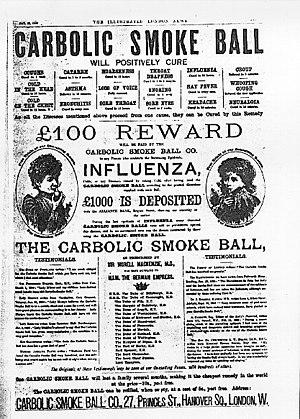- RT @kristinbrianne: Get Talk and Txt Unlimited Cell Svc w/ Free Phone for $10 per month by joining DNA for Free. http://tinyurl.com/yyg5ohn #
- RT: @ChristianPF is giving away an iPod Touch! – RT to enter to win… http://su.pr/2LS3p5 #
- 74 inch armspan and forearms bigger than my biceps. No, I don't button my shirt cuffs. #
- RT @deliverawaydebt Money Hackers Network Carnival #111 – Don't Hassel the Hoff Edition http://bit.ly/9BIAvE #
- @bargainr What would it take to get you to include me in the personal-finance-bloggers list? #
- Working on a Penfed application to transform my worst interest rate into my best. #
- Gave the 1 year old pop rocks for the first time. Big smiles. #
- @Netflix @Wii disc works well and loads fast. Go, go gadget movie! #
The Magic Toilet

- Image by tokyofortwo via Flickr
My toilet is saving me $1200.
For a long time, my toilet ran. It was a nearly steady stream of money slipping down the drain. I knew that replacing the flapper was a quick job, but it was easy to ignore. If I wasn’t in the bathroom, I couldn’t hear it. If I was in the bathroom, I was otherwise occupied.
When I finally got sick of it, I started researching how to fix a running toilet because I had never done it before. I found the HydroRight Dual-Flush Converter. It’s the magical push-button, two-stage flusher. Yes, science fiction has taken over my bathroom. Or at least my toilet.
I bought the dual-flush converter, which replaces the flusher and the flapper. It has two buttons, which each use different amounts of water, depending on what you need it to do. I’m sure there’s a poop joke in there somewhere, but I’m pretending to have too much class to make it.
I also bought the matching fill valve. This lets you set how much water is allowed into the tank much better than just putting a brick in the tank. It’s a much faster fill and has a pressure nozzle that lies on the bottom of the tank. Every time you flush, it cleans the inside of the tank. Before I put it in, it had been at least 5 years since I had opened the tank. It was black. Two weeks later, it was white again. I wouldn’t want to eat off of it, or drink the water, but it was a definite improvement.
Installation would have been easier if the calcium buildup hadn’t welded the flush handle to the tank. That’s what reciprocating saws are for, though. That, and scaring my wife with the idea of replacing the toilet. Once the handle was off, it took 15 minutes to install.
“Wow”, you say? “Where’s the $1200”, you say? We’ve had this setup, which cost $35.42, since June 8th, 2010. It’s now September. That’s summer. We’ve watered both the lawn and the garden and our quarterly water bill has gone down $30, almost paying for the poo-gadget already. $30 X 4 = $120 per year, or $1200 over 10 years.
Yes, it will take a decade, but my toilet is saving me $1200.
What is a Mechanic’s Lien?

- Image via Wikipedia
When you hire someone to work on your property or provide material to build or improve it, they are entitled to get paid. A mechanic’s lien is the method of enforcing that payment.
Here is what you need to know about mechanic’s liens.
A contractor must usually give you written notice of intent to file a lien if the contract isn’t paid. He needs to do this within a short time of beginning the work. The notice will include text to the effect that subcontractors also have the right to file a lien if they are not paid. This notice gives you two methods of defense: You can pay the subcontractors directly and withhold that amount from the payment to the contractor, or you can withhold the final payment until you have received a lien waiver from each of the subcontractors.
If the notice isn’t given correctly, the contractor forfeits his right to file a lien. Also, in most places, if a contractor is supposed to be licensed to do the work, but isn’t, he’s not able to file a lien.
Subcontractors must also provide notice on intent within about 45 days–depending on the state–of the time they first provide services or material, or the lien is not enforceable.
Protecting Yourself
First, you only have to pay once. If you pay the contractor in full before getting the notice of intent from the subcontractors, you can’t be forced to pay again.
Next, make the contractor provide a list of all subcontractors and keep track of any notices of intent you get. Get lien waivers from everyone involved before you make the final payment to the contractor.
Finally, you have the rights defined in the notice of intent to file a lien. You can either pay the subcontractors directly, or you can withhold the final payment until you receive lien waivers from each subcontractor.
Resolution
The lien holder has 120 days to file the lien and 1 year to enforce it. Enforcing simply means that it a suit has been filed. Once that happens, you can either pay the contractor, attempt to settle with the contractor, or you can take the contractor to court to determine the “adverse claims” on your property. There aren’t too many choices at this point.
Do yourself a favor and get lien waivers before you make the final payment on any work done on your property.
30 Day Project – January
This month, I have two 30 Day Projects.
My first project is to start waking up at 5am. This will add an extra 90 minutes to my day, which will give me time to manage all of my other 30 day projects. I’ll be able to wake up to a quiet house, walk the dog, eat breakfast and not start every day in a rush to get out of the house. Today was my exception. After watching 2010 arrive, I didn’t get up early.
The second project is to start reading to my children every night before bed. We read to the kids often, but not every day. That’s going to change. We are also working on breaking the girls of the family bed. If I can read them to sleep each night, it will help. Good, educational family time that makes it easier to sleep every night.
These are both habits I want to keep long after the month is up.
The Benefits of Ignorance
For years, we had a sweet deal with day care. We had three kids and we were the only family with three kids, so we got a bulk discount that essentially made my oldest free. Compared to the regular price, I think we were paying about ten dollars a week for him to be in daycare, which was great, since he was only there before and after school.
Then he aged out of daycare, and we lost our sweet, sweet deal.
Then the prices went up across the board.
We lost the sweet deal, and then the price went up and our youngest hit the next age bracket.
On the price sheet, the age brackets went from birth to 1, from 1 to 2, and from 2 to kindergarten. I made the mistake of interpreting that to mean that her fee would change when Baby Brat turned three, not when she turned two. I’ve been making that mistake since December when the price went up.
A few weeks ago, I dropped off the kids and forgot to pay for the week, so my wife paid when she picked up the girls. When my wife picked up the girls, she noticed that we hadn’t paid. She had no idea how much we needed to pay because she has never been the one that’s been responsible for making the payments.
Our provider added up the cost and found it was $15 per week less than we’d been paying.
When I balanced the checkbook the following weekend, I noticed that she paid less than our normal rate. We called daycare and now we’re making up for the last 17 weeks of overpayments by paying less each week. We’re paying about $65 less per week. When we’re caught up, we’ll be paying $60-75 less per month, depending on the month.
All due to sweet, sweet ignorance. Ignorance really can be bliss. Sometimes when you know what’s going on, you just assume that you’re making the right decision and you’re afraid to ask questions for fear of looking stupid. If you don’t know, and there’s nothing you should have known, and it’s possible to save quite a bit of money by just acknowledging the fact that you don’t know.
Also, lesson learned: If you’re not sure, ask! Don’t assume when there’s a chance your assumption could be costing you money.
Unlicensed Health “Insurance”
Health insurance is–without a doubt–expensive.
As much as I hate the idea of socialized health care, it does have one shiny selling point to counter its absolute immorality: it’s cheap. Assuming, of course, you ignore the higher taxes and skewed supply/demand balance.
Here in the US, we’re free from that burdensome contrivance. Instead, we have health care and health insurance industries that are heavily regulated and ultimately run by people who have A) never held a job outside of government or academia, and B) have no idea how to run either a hospital or a business. That works so much better. Some days, I think our health system would be better run by giving syringes and band-aids to drunken monkeys. The high-level decision making wouldn’t be worse.
Thanks to that mess and the high unemployment rate that somehow hasn’t been remedied by the 27 bazillion imaginary jobs that have been save or created in the last 2 years, some people are hurting. Not the poor. We have so many “safety net” programs that the poor are covered. I’m talking about the “too rich to be considered poor, but too poor to be comfortable”, the middle class.
If are much above the poverty line, you will stop qualifying for some of the affordable programs. The higher above the line you go, the less you qualify for. That makes sense, but the fact that we have so many safety net programs means there is a lot of demand created by all of the people who are getting their health care “free”.
That drives the prices up for the people who actually have to pay for their own care. Yes, even if you have an employer-sponsored plan, you are paying for the health insurance. That insurance is a benefit that is a part of your total compensation. If employers weren’t paying that, they could afford higher wages.
As the price goes up, employers are moving to a high-deductible plans, which puts a squeeze on the employees’ budgets. Employees–you and I, the people who actually have to pay these bills–are looking for ways to save money on the care, so they can actually afford to see a doctor.
In response to that squeeze, some unscrupulous people(#$%#@%! scammers) are capitalizing on the financial pain and selling “health discount plans” which promise extensive discounts for a cheap membership fee. These plans are not insurance. In a best-case scenario, the discount plans will get you a small discount from a tiny network of doctors and clinics. Prescription drug plans are no better. You may get a 60% discount, but only if you use a back-alley pharmacy in Nome, Alaska between the hours of 8 AM and 8:15 AM on January 32nd of odd leap years.
How can you tell it’s a scam?
The scammers will try to sell you on false scarcity. They’ll say the plan is filling up fast and you have to buy now if you want to get in on it. For all major purchases, if you aren’t going to be allowed time to research your options, assume it’s a scam. Good deals won’t evaporate.
They aren’t licensed. Call the Department of Commerce for your state and see if the company is a licensed insurance provider. Pro tip: they aren’t.
They don’t want you to read the plan until after you’ve paid. That’s a flashing, screaming, electro-shock warning sign for anything. Once you’ve given them your money, your options are reduced.
The price is amazingly low. Of course it is. They aren’t actually providing any services, so their overhead is nonexistent. They only have to pay for gas to get to the bank to cash your checks.
Really, the best way to judge if something is a scam is to go with your gut. Does it feel like a scam? Do you feel like you’re getting away with something? Does it sound too good to be true?
To recap: health care/prescription discount plans = bad juju.



